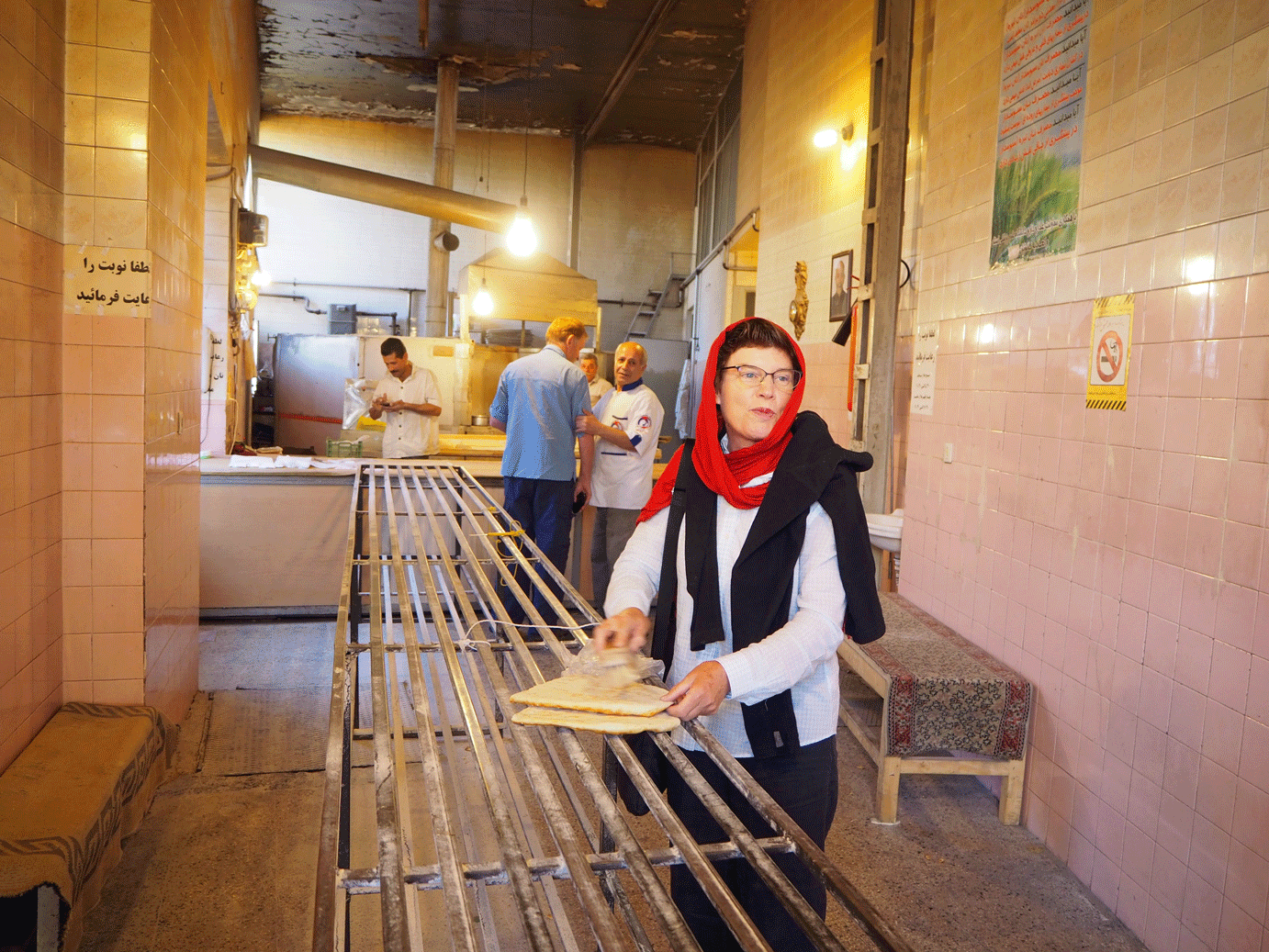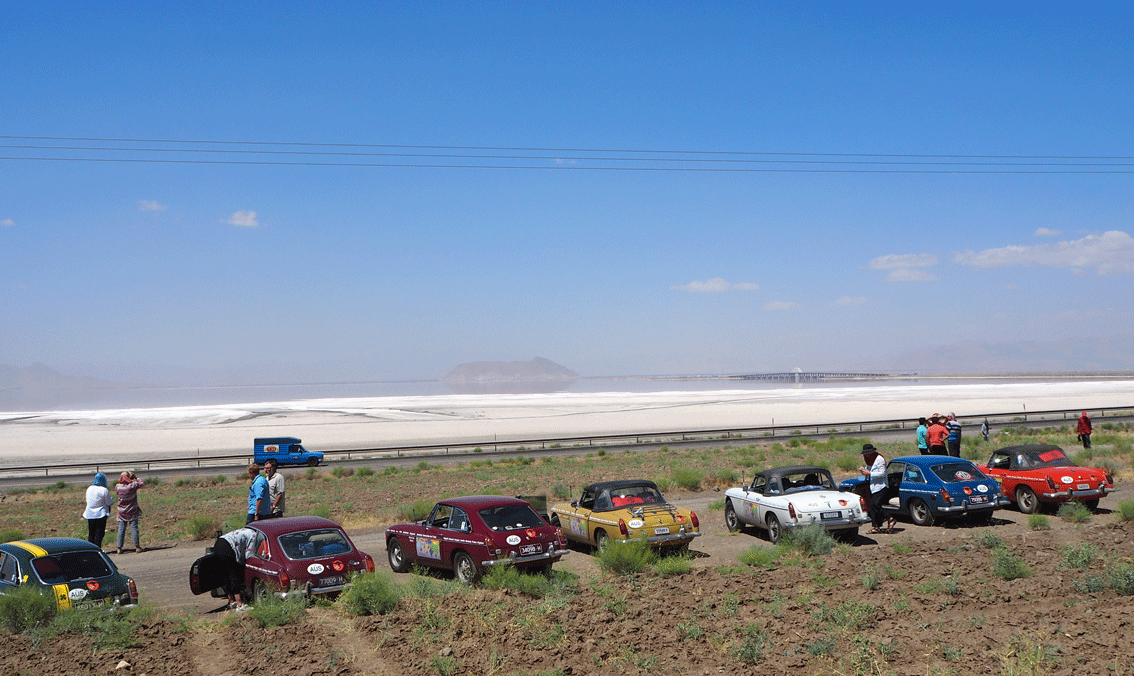The cutting boards in the bakery
Melons for sale
Although we only had a fairly short distance to travel, we left the hotel at our usual 0800, before breakfast had been served. They gave us a picnic hamper which we topped up in a local village with fresh, hot bread straight out of the oven and some sultana syrup, which looked and tasted much like golden syrup.
The town was small, but operated 3 bakeries around the small central square. They bake a couple of types of bread. A long strip which translated from Iranian means pebble bread. Its cooked in a large oven on a bed of hot gravel. The other is naan, a shorter and thicker strip of bread. After the baker hands you the hot bread and plastic bag, you take it across to a rack and dust off the loose pebbles and soot with the broom provided and cut it across with the knife, fold it and stuff it into a plastic bag.
We also visited a silk printing factory. Their techniques were much the same as batik printing. A blockout pattern is stamped onto the fabric, its dyed, the blockout removed and the area is still white. This process may occur multiple times until the design is complete. The designs were all traditional and local. The girls liked the scarves.
We headed off to Orumiyeh. To get there you cross Lake Orumiyeh. A large salt lake and home to a multitude of migratory birds including flamingos. Unfortunately all the birds had migrated. But the view was picturesque. The whites and pinks in the lake combined with clouds for a mirror reflection. The distant snow capped mountains faded into the salt haze. Vendors sold bags of local salt by the roadside.
Anyone for a paddle?
Camping, Iranian style
Orumiyeh sits about 40 kilometers to the east of the Iran, Turkey, Iraq border junction. It has a long history, but very little to show for it. This time we found the Assyrian Orthodox Church of St Mary. Reputed to be the second oldest in the world having been established on the site in the 3rd century and built over the tomb of one of the 3 wise men, who I learnt were Zoroastrian priests. Unfortunately the original 3rd century church no longer stands. It was last rebuilt by the Soviets in 1944. There are said to be 100 churches in the area, with a population that is a mix of Azerbiajanis, Armenian and Persian.
More melons
St Mary's
Hard at work.
The oil man
We also found the bazaar where we had a long conversation with a man who’s business involved extracting oils from 40 different kinds of seeds. The oils were used for health (digestion and chest ailments), medicines, perfumes and some for cooking.
We were expecting too eat in town, but it was devoid of restaurants. Our oil man was kind enough to recommend a place for dinner. It was a couple of kilometres past our hotel, so worked well. We arrived at 9.00pm to find the recommended place deserted and the mullah in the local mosque in full voice. We had our timing out of sync. In Moshhad sunset was deemed to be 8.00pm, but here in the west, it was 9.00pm. As we were ordering there was a steady stream of people taking their seats. While the menu was mainly kebabs, the reserved table next to us had some really delicious stuff on it, waiting for its customers to arrive. We asked for the same as they had, only to find out that in Iran you can bring your own food to a restaurant. The people were kind enough to share some of it with us.
In the street and where they can people are really keen to engage with us and are particularly friendly and helpful, as I think its rare for them to find independent tourists like us. Especially in off the beaten track places like Orumiyuh. Its just a pity they drive like maniacs.



























































